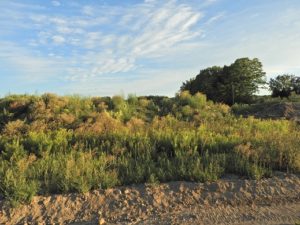Treasured Places from Wasted Spaces

By Todd Beasley
The common challenge with school campus greening projects is to soften the institutionalized look (devoid of plant material and enclosed by some sort of fencing structure) of the grounds, while also creating a safe and appealing environment that doesn’t require more work for an already over-burdened facilities department. A sustainable approach to consider, then, is to look at the attributes that your school grounds have before modifying them into habitat-enhancing educational gardens. The majority of schools have several areas that are worthy of transforming into viable learning spaces. What you create on these spaces is very much dependent on their proximity to buildings, the flow of nearby traffic, and their accessibility for maintenance.
Chain-link fences
The vertical element is one of the most ignored aspects of garden design because it usually requires a structure, if we are thinking beyond the mature height of trees and shrubs. Chain-link fences are invaluable areas for garden projects and extremely underutilized. Vines that exist to grow on these structures fall within three major categories: perennial, annual, and edible.
This content is restricted to subscribers only.
If you are not yet a subscriber, please consider taking out a subscription here.
If you are an existing subscriber, kindly log in or contact us at info@greenteacher.com for more information.





